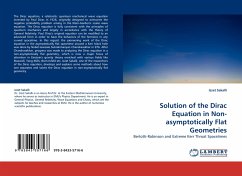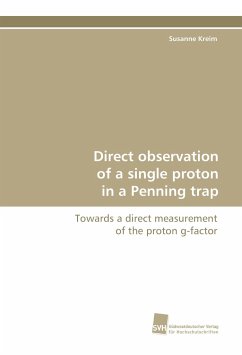
Design, Development and Operation of Novel Ion Trap Geometries
Novel Desings for Ion Traps
Versandkostenfrei!
Versandfertig in 6-10 Tagen
39,99 €
inkl. MwSt.

PAYBACK Punkte
20 °P sammeln!
This book centres around the discussion of the advantages and disadvantages of various designs of ion traps. The first chapter introduces the topic of ion traps to clarify the local context of this work. In the second chapter the proposal of a novel design for a Penning ion trap is presented. It is shown that this trap, called the wire trap, has many advantages over traditional designs due to its open geometry and scalability. In the third chapter the development of two scalable RF wire traps is presented. Both designs are based on the geometry of the wire trap. In the following chapter, the d...
This book centres around the discussion of the
advantages and disadvantages of various designs of
ion traps. The first chapter introduces the topic of
ion traps to clarify the local context of this work.
In the second chapter the proposal of a novel design
for a Penning ion trap is presented. It is shown
that this trap, called the wire trap, has many
advantages over traditional designs due to its open
geometry and scalability. In the third chapter the
development of two scalable RF wire traps is
presented. Both designs are based on the geometry of
the wire trap. In the following chapter, the design,
simulation, construction and testing of a wire trap
prototype is presented. The fifth chapter presents
another novel design for a planar Penning trap. This
design, called the two plate trap, shares many
advantages of the wire traps, including the
scalability. The sixth chapter of this book deals
with the design of a cylindrical Penning trap for
the storage of highly charged ions. Finally, in the
last chapter, a summary of the original
contributions of this work is presented.
advantages and disadvantages of various designs of
ion traps. The first chapter introduces the topic of
ion traps to clarify the local context of this work.
In the second chapter the proposal of a novel design
for a Penning ion trap is presented. It is shown
that this trap, called the wire trap, has many
advantages over traditional designs due to its open
geometry and scalability. In the third chapter the
development of two scalable RF wire traps is
presented. Both designs are based on the geometry of
the wire trap. In the following chapter, the design,
simulation, construction and testing of a wire trap
prototype is presented. The fifth chapter presents
another novel design for a planar Penning trap. This
design, called the two plate trap, shares many
advantages of the wire traps, including the
scalability. The sixth chapter of this book deals
with the design of a cylindrical Penning trap for
the storage of highly charged ions. Finally, in the
last chapter, a summary of the original
contributions of this work is presented.












